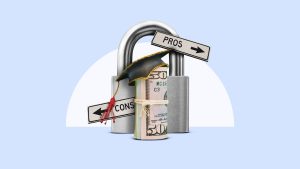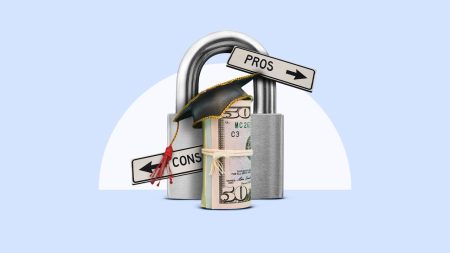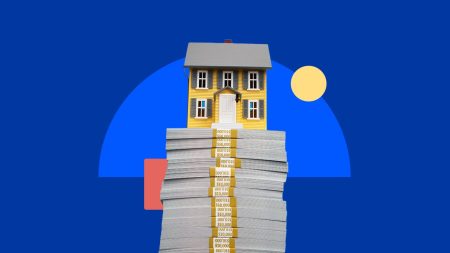Key takeaways
- SBA 7(a) loans are the most common type of loan issued by the Small Business Administration.
- You can get several types of SBA 7(a) loans, depending on your needs, including a 7(a) Small, Express, Export Express or CAPlines loan.
- You can use a 7(a) loan for a variety of purposes, including working capital, buying equipment or real estate or refinancing debt.
SBA loans are small business loans provided by private lenders and backed by the U.S. Small Business Administration. These loans guarantee that the government will pay back a portion of the loan if you can’t repay it. SBA loans are highly sought after by small businesses because they offer competitive interest rates and flexible repayment terms.
The SBA 7(a) loan program is the most popular, with over 64,400 loans worth over $29 billion having been approved so far in 2025, according to the SBA weekly lending report. There are several types of 7(a) loans to choose from to meet different business needs.
Compare the different 7(a) loans, interest rates and fees and eligibility requirements to find which SBA 7(a) loan suits you best.
What a SBA 7(a) loan does
The standard SBA 7(a) loans guarantee up to 75 percent of the loan amount. The lender may also require collateral to guarantee the rest of the loan, using your business’s current assets or the assets being purchased or improved by the loan.
The loan is considered fully secured when the assets used equal the amount borrowed. Lenders and borrowers are free to negotiate loan terms and interest rates, but the lender cannot exceed the maximum interest rate set by the SBA.
For other SBA 7(a) loans like the SBA 7(a) Small loan or Express loan, you may not need collateral for loans of $50,000 or less. Loans above $50,000 will typically use the lender’s existing collateral policies to determine how much collateral you need.
SBA 7(a) loans must be used for one or more of these purposes:
- Real estate
- Working capital
- Refinancing current debt
- Buying equipment, furniture or supplies
- Change in ownership
SBA 7(a) loan requirements
SBA 7(a) loans come with a catch: you must meet the SBA’s strict set of requirements to be eligible for the 7(a) loan with all of its favorable rates and terms.According to the SBA 7(a) loan requirements for your business include:
- Operating for profit
- Meeting the SBA definition of a small business
- Doing business in the United States or its territories
- Demonstrating the need for a loan
- Demonstrating that the funds will support a sound business
- Being up-to-date on any existing U.S. government debt obligations
- Being creditworthy and reasonably able to repay the loan
- Must attempt to get conventional business loans and financing before applying
SBA lenders also set their own criteria for minimum time in business, credit score and annual revenue. These requirements tend to be strict, such as requiring two years in business. Lenders typically require strong personal credit, like 670 or above, though some lenders may accept fair credit, such as a personal credit score of 630.
SBA 7(a) loan rates
SBA lenders will offer an interest rate based on your creditworthiness and financial profile. Regardless of your credit score and finances, lenders cannot exceed these maximum interest rates set by the SBA.
Fixed-rate loans
| Loan amount | Maximum interest rate |
|---|---|
| $25,000 or less | 15.50% |
| $25,001 to $50,000 | 14.50% |
| $50,001 to $250,000 | 13.50% |
| Over $250,000 | 12.50% |
SBA loan rates are current as of July 2025, calculated with the current prime rate of 7.50%.
Variable-rate loans
| Loan amount | Maximum interest rate |
|---|---|
| $50,000 or less | 14.00% |
| $50,001 to $250,000 | 13.50% |
| $250,001 to $350,000 | 12.00% |
| Over $350,000 | 10.50% |
SBA loan rates are current as of July 2025, calculated with the current prime rate of 7.50%.
SBA (7a) loan fees
When getting an SBA 7(a) loan, you’ll need to pay a fee for receiving the SBA guarantee for the loan, called a guarantee fee.
For fiscal year 2025, the guarantee fees are:
Loans with 12-month terms or less
| Loan amount | Guarantee fee |
|---|---|
| $1 million or less | 0.00% |
| Over $1 million | 0.25% of guaranteed portion of the loan |
Loans with terms over 12 months
| Loan amount | Guarantee fee |
|---|---|
| $1 million or less | 0.00% |
| $1,000,001 to $5 million | 3.50% of the guaranteed portion of the loan up to $1 million, plus 3.75% for amounts over $1 million |
As an exception, Express loans given to veterans and their spouses won’t be charged a guarantee fee.
How to apply for an SBA 7(a) loan
To apply for an SBA 7(a) loan, you will need to work with a lender approved by the SBA. Then, be prepared to submit a long list of financial documentation to show that you can repay the loan. You’ll go through multiple steps to apply for the loan, including:
1. Find a lender
Many financial institutions offer SBA 7(a) loans, though you’ll usually find them with traditional banks and credit unions. The SBA offers an online tool that helps match businesses with lenders. Finding the right lender can help you apply and, ultimately, give you the best odds of getting approved for a loan.
Some lenders also participate in the SBA Preferred Lender Program, which certifies that the lender can process SBA loans efficiently. Preferred lenders may be able to bypass getting direct SBA approval for some loans, significantly speeding up the loan approval process. Lenders in the Preferred Lending program include Chase, Bank of America and Huntington National Bank.
Lender experience
You might also be able to speed the loan process by choosing a top-performing SBA lender in your area. These lenders may or may not be part of the Preferred Lender Program, but they handle a high volume of SBA loans each year. That expertise may help them process things more quickly.
2. Submit an application
Once you have selected your lender, you will need to gather the necessary documents and fill out the proper 7(a) loan application to be considered for approval. There are several documents that you may be required to submit in order to be approved for an SBA 7(a) loan. While your lender will help you submit the proper forms, you may need the following:
- SBA Form 1920
- SBA Form 1919 (Borrower Information Form) SBA Forms 912 and 413 (Personal background and financial statement)
- Business financial statements, like balance sheets and profit and loss statements
- Projected financial statements
- Business certificate or license
- Prior loan applications
- Income tax returns
- Information on each business owner
- Business overview and history
- Business lease
Loan popularity
According to the 2024 Small Business Credit Survey, SBA loans or lines of credit were the third most popular type of loan, with 20 percent of employer firms applying for it. Of those, 55 percent were fully or partially approved for the SBA loan.
3. Await approval
Once you submit your SBA 7(a) loan application, you will have to wait for the SBA to review it and make a decision. SBA Preferred Lenders may approve loans faster than non-preferred lenders. The SBA states that the turnaround time for its portion of the approval is five to 10 business days, but any missing documentation, application errors or other lender requirements could delay the process. You should be willing to wait anywhere from 30 to 90 days since this is the average processing time for SBA loans.
SBA loan alternatives
Bankrate insight If you don’t qualify, or you were denied an SBA loan, you might need to consider these financing alternatives:
Bottom line
The SBA 7(a) loan program is the U.S. Small Business Administration’s most popular SBA loan because it offers several loans that can be used for a variety of purposes. The SBA also sets maximum interest rates and offers long repayment terms, making 7(a) loans highly attractive to small businesses. However, you will need to meet the strict requirements set by both the SBA and the lender in order to be eligible.
Frequently asked questions
Why we ask for feedback
Your feedback helps us improve our content and services. It takes less than a minute to
complete.
Your responses are anonymous and will only be used for improving our website.
Help us improve our content
Read the full article here









